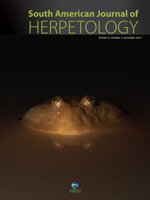The genus Pseudis (Hylidae) includes aquatic frogs distributed throughout South America east of the Andes. Few papers have been published on the ecology of these species, despite the great interest their gigantic larvae raise among herpetologists. Pseudis tocantins has a widespread distribution along the Tocantins-Araguaia hydrographic basin in Brazil and virtually nothing has been published about its natural history and ecology. The present work aimed to evaluate, based on 159 specimens from 13 populations, sexual dimorphism in size and shape and diet composition of P. tocantins along most of its known distribution. Females were significantly larger than males and body shape differed significantly between sexes, with tibia length and tympanum diameter as the variables contributing the most to this difference. We found 13 prey categories in frog’s stomachs, with Araneae, Odonata, and Orthoptera being the most important items, respectively. Aquatic animals were also part of the species diet (even though less representative than non-aquatic prey), showing that P. tocantins feeds on both above water and subaquatic prey.
How to translate text using browser tools
1 December 2014
Sexual Dimorphism and Diet of Pseudis tocantins (Anura, Hylidae, Pseudae)
Matheus de Oliveira Neves,
Carlos José da Silva Morais,
Adrian Antonio Garda
ACCESS THE FULL ARTICLE
Brazil
morphometry
natural history
trophic niche





